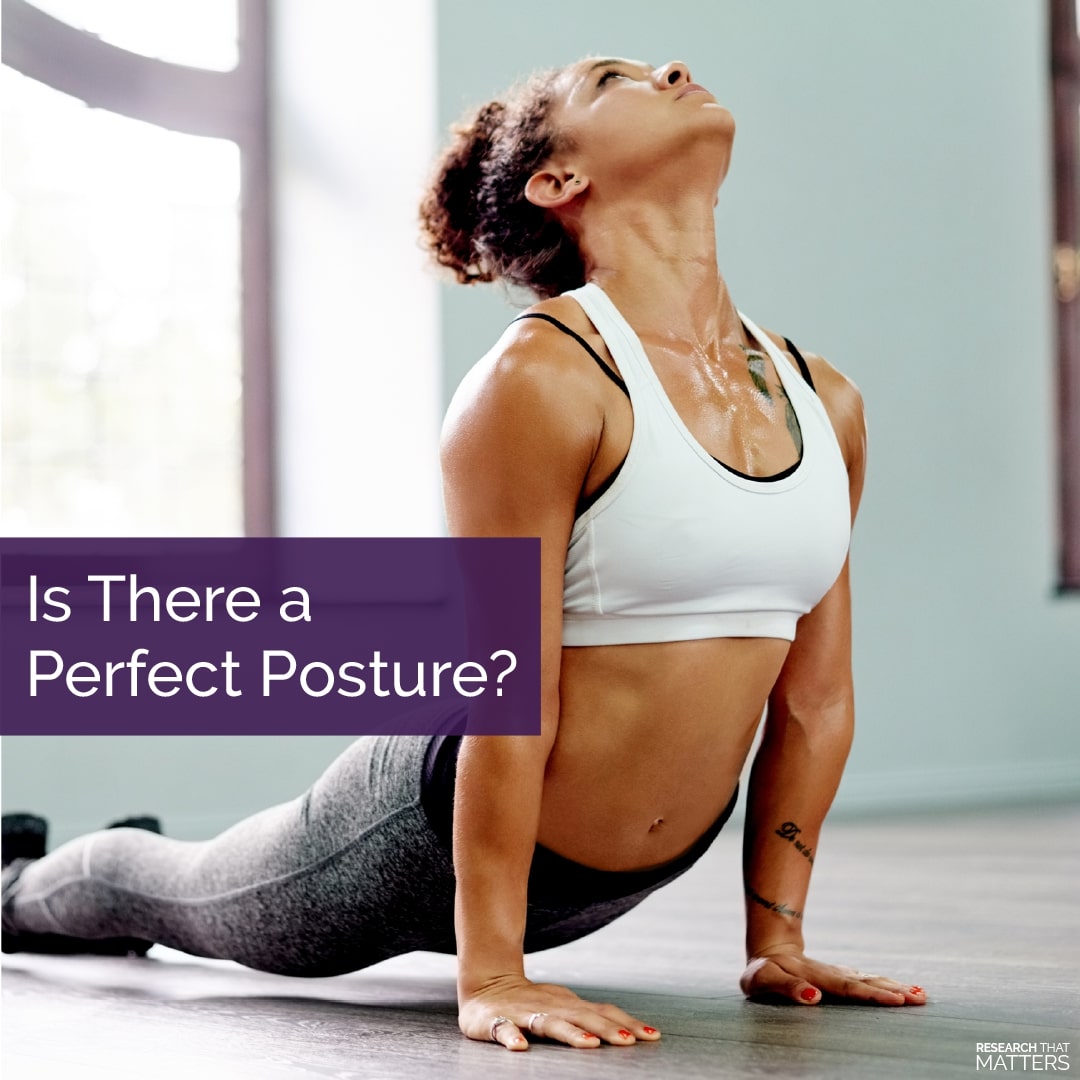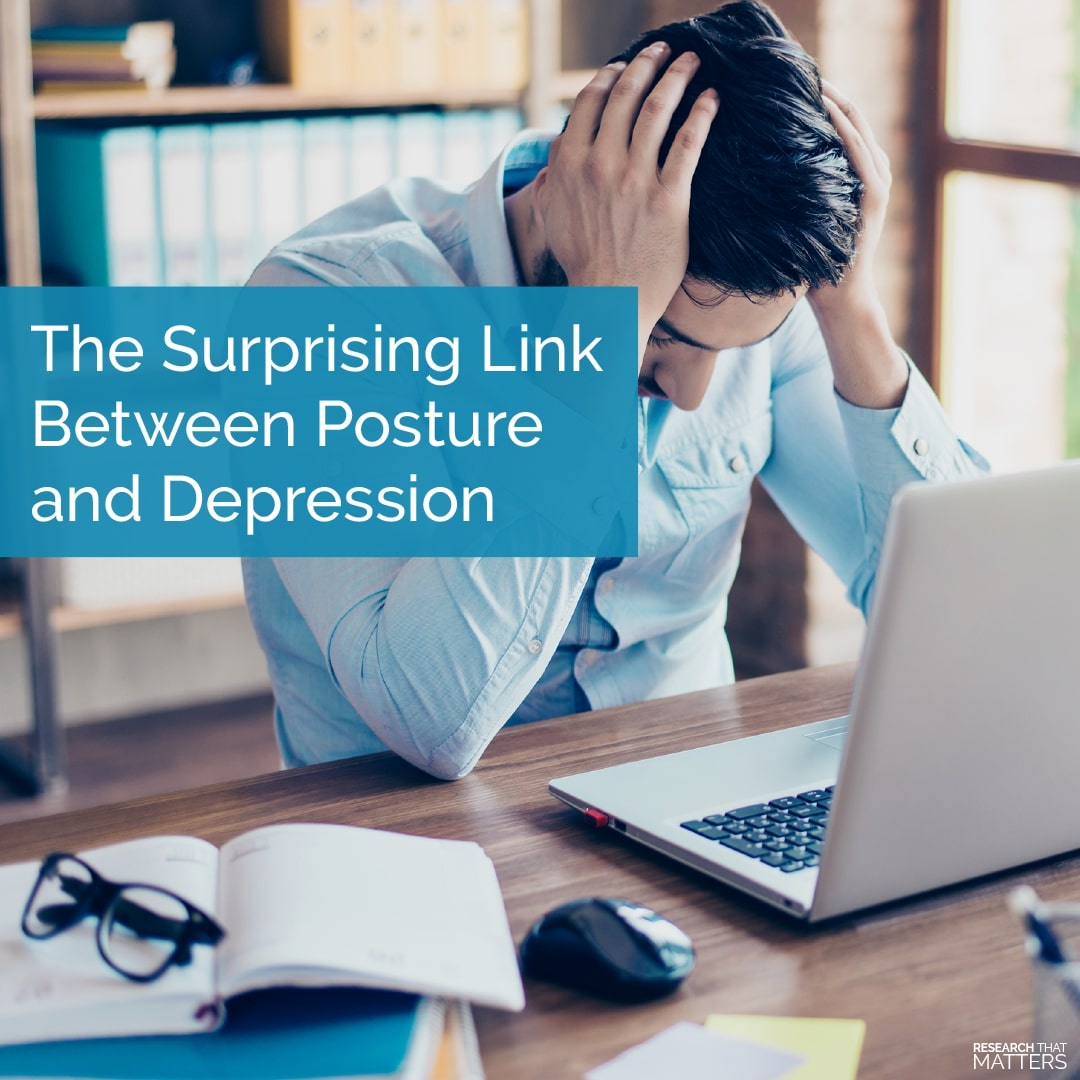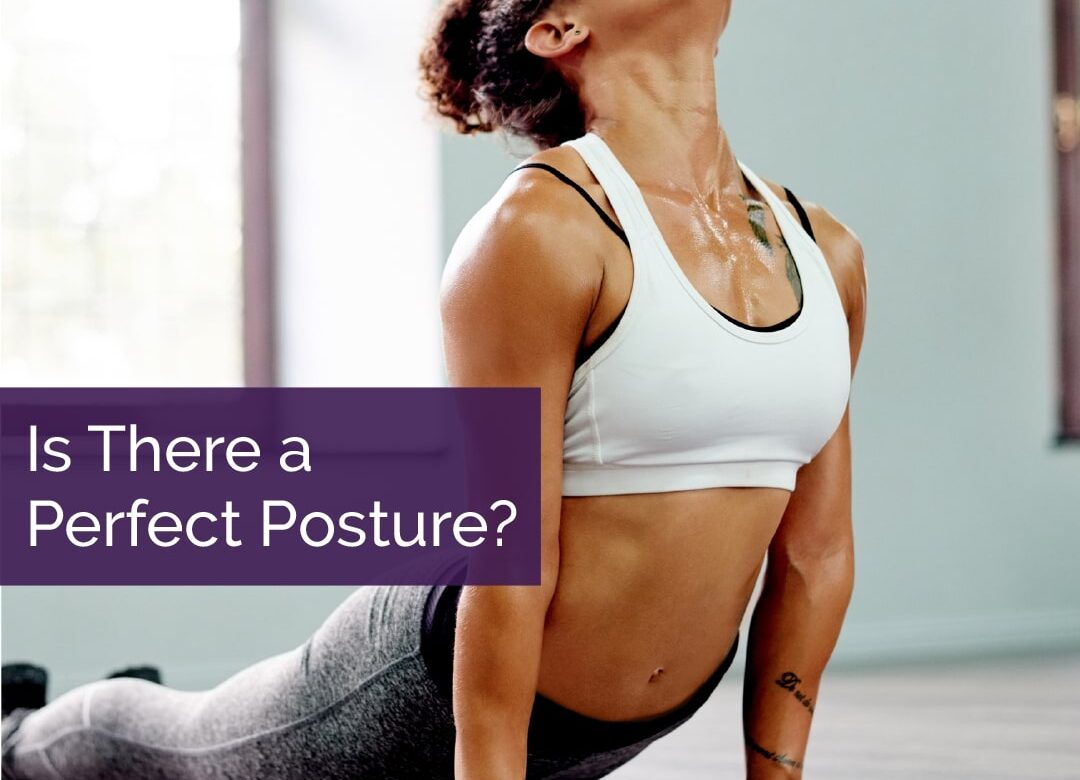Is There a Perfect Posture?
 Bottom Line:
Bottom Line:
"Sit up straight and stop slouching!"
We’ve all heard (or said) it a million times in the name of having perfect posture.
You've likely heard this since childhood, and for good reason.
Poor posture as a kid can create health challenges later in life.
Rounded shoulders (scapular protrusion), swayback (lumbar hyperlordosis) and a hunched upper back (thoracic hyperkyphosis) are all postural imbalances that place a tremendous amount of stress on the spine.
And when those imbalances persist, the muscles supporting your spine must work harder to support your body weight, and that can result in pain.
Know that If you’re experiencing daily aches and pains, seeing a posture rehab chiropractor in Singapore is a great place to start.
Abnormal postures have been linked to depression, decreases in energy, headaches, and carpal tunnel syndrome.
Maintaining good posture as you age can help keep any unnecessary stress off your spine and joints, positively impacting your overall spinal health for years to come.
What’s more, your ability to move through a full range of motion without pain plays a big role in how your posture looks when you're still.
But is there such a thing as perfect posture?
Well, the idea of perfect posture is a bit complicated.
The latest research shows that it makes more sense to think about your posture as dynamic, not static.
That’s because your ideal or perfect posture is constantly changing and evolving.
Why it Matters:
Your posture consists of a dynamic pattern of responses, reflexes, and habits - not a single position.
Poor posture is usually caused by what you aren’t doing instead of what you are doing.
The effects of gravity, the ergonomics of your desk at work, and your anatomy all play a role.
Even with great ergonomics, sitting for hours each day working on a computer can lead to postural issues.
It’s true.
As the leading posture rehab chiropractor in Singapore, we see this in our practice every day.
Think about it.
Most of us aren't moving and stretching very often as we work or even rest with our smartphones or tablets in hand.
Over time the imbalances caused by those long hours spent looking down at our devices can lead to a habitual forward head posture.
And while there may not be a one size fits all perfect posture, you can bet nearly every one of us has developed some level of habitual forward head posture.
Why does that matter?
Well, when you start to lean forward, it places a tremendous amount of extra pressure on the discs in your neck and spine.
This added pressure can cause increased compression and lead to pain.
Even just a few inches of forward head posture can double or triple the amount of stress on the spinal joints in your neck.
Think about the impact this can have day after day after day.
Sustained forward head posture has also been associated with a weakening of the supporting muscles of your spine.
It’s estimated to result in neck pain for up to 75% of us.
That neck pain as well as tension, stiffness, and tenderness are all signs of chronic forward head posture.
The good news?
While it’s not easy to maintain those perfect postures, there are things you can do to perfect your posture every day.
You can start by taking short breaks to stretch at least every 15-30 minutes.
Doing so will help you reset your balance and relax your body, and it’s one of the most essential practices you can adopt when it comes to improving your posture in the long term.
Trapezius strengthening has also been shown to provide clinically significant relief for those struggling with neck pain as a result of forward head posture.
Next Steps:
By breaking the pattern of poor posture, you can reduce your likelihood of experiencing many common aches and pains.
Every day, you can take advantage of simple opportunities to improve your strength, flexibility, and ergonomics to develop more ideal or perfect posture patterns.
Try this.
Next time you’re on the phone, stop for a moment and see if your head is creeping forward.
If your chin is tucked down and your ears are in front of your shoulders, then you’re in that forward head posture we discussed.
When that happens, it's a sign that it’s a good time to take a break, stretch, and reset.
Simple.
And remember, both strength and flexibility also play a significant role in your posture.
Strengthening the trapezius muscles, actively maintaining good core strength, and working to balance that strength with flexibility can help your body best adapt to your environment.
Remember. Think of your ideal or perfect posture as dynamic.
It’s constantly changing and evolving no matter how little our daily routines change or how much our daily habits change.
Many of us spend large chunks of our days working on a computer, so it’s important to ensure that our spinal joints are moving well and moving correctly to help keep us feeling great.
That's where we come in.
Chiropractors are taught many of the finer details that go into developing those ideal or perfect postures.
So, if you’ve been living with nagging aches and pains, and you’re interested in working with a posture rehab chiropractor in Singapore, contact us for an evaluation today.
Together, we can help you perfect your posture and say goodbye to pain for years to come!
Science Source(s):
Effects of Trapezius Strengthening on Patients with Neck Pain. Med Sci Monit. 2020.
Improving Your Posture to Keep Your Spine Healthy
 Bottom Line:
Bottom Line:
Spending more time on the couch, at your computer, and on your mobile devices has probably led you to visit Google to search for ways to start improving your posture a time or two.
Those searches have probably also left you wondering… what exactly is posture?
Well, posture is the position that your body maintains while standing, sitting, or lying down.
To put it another way, posture is how you hold your body.
To put it yet another way, posture is the particular stance you have when sitting, standing, running, walking, sleeping, and even bending over.
Posture is one of those things that we all know we need to work on.
When you slouch in your chair or stand with poor posture, you put extra strain on your joints and force your muscles to work harder, and that can result in pain.
Take your neck for example.
If you sit with your head’s center of gravity aligned over the spine, your neck muscles need to do very little work.
However, if you sit with your head tilted forward as you would when checking your email or social media on your phone or computer, the muscles in your neck take on the extra strain it takes to hold your head in that position.
That results in a lot of extra work for your neck muscles, and your body has to compensate.
Weakened or unbalanced muscle strength can result in additional stress on your spinal joints.
Over time, the additional stress caused by postural imbalances and tired muscles can lead to changes in how you move and pain.
Are you experiencing daily, nagging aches and pains?
Take it from us, getting a posture assessment in Singapore is a great place to start.
And there are things you can do from the comfort of your own home as well.
Read on.
Why it Matters:
Improving your posture means making adjustments to keep your spinal curves aligned and your weight evenly distributed.
Good posture is essential because it helps reduce the stress on your spine and joints, and with gravity pulling down on you every day, that’s important.
Less stress means your spinal joints and ligaments can move more freely through their full range of motion.
So, improving your posture can have positive impacts on how well you move and how good you feel.
What’s more, new research also indicates that maintaining a good or balanced posture can help you use your muscles more efficiently and prevent fatigue.
Getting a posture assessment in Singapore can help you determine the best ways to start actively improving your posture.
To avoid back pain, your best posture may be one of motion.
Chiropractors often like to say, "motion is lotion" (for your body).
If you sit in one position too long, there are small nerves in your body that will detect the mounting pressure and send messages to your brain indicating that you're uncomfortable.
Researchers believe that those signals are our body's way of telling us to change positions before we begin to experience pain.
That's a reason we also like to say pain stands for “pay attention inside now.”
Here, that discomfort you feel is your prompt to move!
Changing positions or using a standing desk can help you start improving your posture and reduce your risk of experiencing chronic neck and back pain.
And if you've been considering investing in a standing desk, get this.
Standing desks have been shown to reduce the recurrence of back pain by over 30% when compared to sitting at a desk.
Next Steps:
One of the best ways to start improving your posture is not staying in a single position for too long.
To help relieve and balance the physical stress placed on your body each day, it’s recommended that you stand and move around frequently.
Changing your position at regular intervals, using a lumbar support when seated, and even using a standing desk are all ways to reduce fatigue and pain and to actively start improving your posture.
If you’re having a hard time remembering to move, set a timer on your phone to help you keep track of the time and develop the habit.
If you tend to sit for long periods, make those reminders to stand.
You could take it a step further and use that time to refill your water bottle to help keep you hydrated.
Better yet, you could use that time to perform a couple of the postural exercises we showed you the last time you were in the office or on our social channels.
Different apps can help make your practice easy.
Just figure out what works best for you and do your best to stick to it.
And if you notice you’re not able to move through your body's full range of motion without pain, don’t put off getting checked out.
Take 5 minutes to schedule a posture assessment in Singapore with us.
By proactively addressing your movement issues today, we can start improving your posture before those nagging aches and pains set in!
Science Source(s):
Back Health and Posture. Cleveland Clinic. 2020.
Breaking Up Sitting with Standing Improves Discomfort. Occup Environ Med. 2014.
Postural Stress: The Link Between Tech Neck and Pain
 Bottom Line:
Bottom Line:
While it’s true that your anatomy can contribute to the levels of postural stress you experience, so can many of the small decisions you make each day.
You’ve probably seen an article or two floating around the web about the relationship between tech neck and pain.
You may have even seen an uptick in commercials for neck pain treatment in Singapore, and for good reason
Did you know that many of us spend 2 hours or more per day on our smartphones and 5 hours or more on our computers?
That adds up to thousands of hours year after year after year of you keeping your neck “stuck” in an awkward position!
Take a moment right now and check…
Is your head creeping forward as you read this?
If your chin is tucked down and your ears are in front of your shoulders, you’re in the forward head posture we mentioned earlier called tech neck.
You may have also heard this posture referred to as "text neck."
Driving a car, working on the computer, and using a tablet or phone all usually result in this less-than-ideal posture.
And over the past few years, the number of people experiencing headaches and tech neck and pain has exploded.
Why it Matters:
Let’s take a closer look at how tech neck and pain are related.
The average human head weighs about 8-11 pounds.
Every day, you’re effectively walking around with a bowling ball (your head) balancing on a toothpick (your neck).
Even under the best circumstances, this places a lot of stress on our spine.
Holding up your head may not seem like a lot, but the 7 bones and 20 muscles of your neck have to work together in perfect harmony to balance that weight so you can move your head around free of pain.
Ideally, you want your ears in line with your shoulders (when your shoulders are pulled back).
It's estimated that tilting your head forward, even just 15 degrees, can increase the weight of your head on your neck by over 3X.
Tilting your head forward 60 degrees can nearly 10X the stress and strain on your neck.
That stress can add up and result in your neck not moving correctly.
We're talking stiffness, dysfunction, headaches, and more.
We’re talking about the development of tech neck and pain, and that can leave you looking for neck pain treatment in Singapore.
To recap...
● Tech neck is the term used to describe the flexed head and neck position when looking down at your smartphone.
● Even 15 degrees of forward bending (flexion) can increase the stress of your head on your neck by 3X.
● Look up taking breaks every 15 minutes and looking up for your phone or tablet can help your body reset and give your muscles a chance to relax.
Next Steps:
Reducing the symptoms of tech neck and pain is more than merely changing the angle of how you look at your phone.
The good news is that being proactive and making a few simple changes to your routine can help you reduce your risk of experiencing pain.
Improving your ergonomics, stretching each day, and receiving periodic spinal adjustments can help you combat the effects of tech neck.
Take a moment today to check your posture.
Be sure to stretch if you notice your shoulders are rounding, your head has moved forward, and your upper back is hunched over.
And if you see yourself regularly slouching into this posture, let us know - especially if tech neck and pain are getting in the way of you enjoying your life.
Before you can start to improve your posture, you have to know what proper posture looks like and perhaps, more importantly, how to maintain it.
That's where we come in.
From evaluation to adjustments to at home stretches and exercises, our team has the expertise to help you correct your posture and overcome your tech neck and pain.
By reducing the stress on your neck, you can look forward to many years of continuing to enjoy your smart devices without pain and discomfort!
It all starts with a click or a call.
Schedule a consultation with us for neck pain treatment in Singapore today to get started.
Science Source(s):
"Tech Neck" Taking a Toll on Posture. Columbia Spine. 2018.
How to Prevent Neck and Back Pain Working From Home. Health Matters. 2020.
The Surprising Link Between Posture and Depression
 Bottom Line:
Bottom Line:
Posture can either work for or against us.
Take it from the leading posture correction specialist in Singapore.
Each day we’re learning more and more about new health conditions associated with prolonged sitting, ill-positioned technology, and even furniture that may have been repurposed to suit the frantic requirements levied at the start of the pandemic.
It’s obvious that it’s never been more important to find the best posture for working at our computers.
And get this.
We’re also learning more about how emotions, posture, and pain sensitivity may all be influenced by each other to some degree.
In fact, posture and depression may be connected.
Consider this.
Have you ever been able to tell someone's mood just by how they walked into a room?
We all have!
It's a great example of how our posture and attitude are connected.
Within seconds you can look at someone and tell whether they are confident or happy.
Posture can influence mood and vice versa for a number of reasons.
Let’s take a closer look at posture and depression.
Why it Matters:
Certain postures have been linked to depression and other health challenges.
For the upper body, we usually see the muscles in the chest and the back of the neck become tight, and the muscles in the front of the neck and the upper back become weak.
This creates the forward head position and rounded shoulders we associate with poor posture.
When you slouch in your chair or stand with poor posture, you put extra strain on your joints and force your supporting muscles to work harder.
To help you better understand just how posture and depression can be linked, try this.
Slouch your shoulders, tilt your head forward, look down at your lap, and then try to take a deep breath.
Note how you feel.
Now, reverse that posture, sit up tall, pull your shoulders back, and take another deep breath in.
Quite the difference, right?
It’s easy to see how maintaining an unnatural, stooped posture can create aches and pains.
And if you’re living with daily aches and pains, contacting a posture correction specialist in Singapore to evaluate your posture can be a great place to start.
Researchers studying posture and depression found that people who were depressed experienced an improved mood after they changed their posture to be more upright.
That's right.
By maintaining a healthy posture, you can gain a better mindset as well as a stronger core and a healthier overall lifestyle.
The exact reason posture, emotion, and pain sensitivity appear to be connected has yet to be determined.
Some believe it’s as simple as feeling emotionally better yourself when your body is in certain positions.
Another theory is that our body posture and position can influence the release of endorphins or feel-good chemicals in the brain.
Whatever the explanation, when it comes to posture and depression, developing good posture habits can help you feel more confident, energetic, and happy.
To recap...
● Slumped posture has been linked with depressive symptoms
● An upright posture has been shown to improve your mood immediately
● Emotions and thoughts affect your posture and energy level. Look up and pull your shoulders back to reset your mind and body!
Next Steps:
The next time you feel down, consider what you now know about posture and depression and pay attention to your posture.
You’ll more than likely find yourself slumped with your head and neck curved forward and down.
One of the best changes you can make in that moment is to pull your shoulder blades back and together, relax your shoulders down away from your ears, and look up.
The more you work on it, the easier it will become.
Start by holding your head and chest in this corrected position for a minute at a time to help build endurance.
You’d be surprised how much of a difference a few minutes a day can make!
And if your posture is causing you neck or back pain, reaching out to a posture correction specialist in Singapore to evaluate your alignment and more is the place to start.
Our doors are open, and we’re here to help.
If you're experiencing depression, we recommend reaching out to a professional for help.
Science Source(s):
Upright Posture Improves Affect and Fatigue. J BehavTher Exp Psychiatry. 2017.
How to Stretch Your Way to Better Health
 Bottom Line:
Bottom Line:
Life is motion.
“Motion is lotion” for your body.
You get the idea.
The point is that moving every day is crucially important to your overall health and wellness, and stretching (and knowing how to stretch properly) is just as important to making sure you’re moving well.
The truth is, stretching is an often overlooked element of self care.
That’s a big part of why we offer stretch therapy in Singapore.
Many of us think the need to stretch applies only to athletes or that we need to commit to yoga for stretching to help us at all.
That’s simply not true.
Consider this.
When you wake up in the morning or stir from a nap, what’s the first thing you tend to do?
Stretch!
It’s almost as if your body is trying to tell you something, isn’t it?
Incorporating stretches and exercises that focus on flexibility into your daily routine, whatever it may be, can help your body maintain the ability to move through its full range of motion without pain.
The benefits are real.
For example, improving the mobility of your mid-back (thoracic spine) can go a long way towards reducing your low back pain, improving your posture, and even decreasing your likelihood of experiencing shoulder issues.
All that said, there are right and wrong ways to stretch.
Knowing the differences and understanding how to stretch with proper technique will help you stay more energized throughout the day and can also improve the flexibility of your joints.
Read on.
Why it Matters:
There are two main types of stretches: static and dynamic.
Static stretching involves stretching different parts of the body to the point of tension (not pain).
When “cold” muscles are stretched in this manner, the stretch itself may actually contribute to muscle tightness, so it’s best to perform these stretches with warm muscles.
Unlike static stretching which involves moving a joint to a point of slight discomfort and holding it for a length of time, dynamic stretching is based on movement and can be used to warm up muscles.
Dynamic stretching is about moving your body through your common ranges of motion with the goal of increasing your range of motion with each repetition of the stretch.
Pilates exercises for example involve a lot of dynamic stretching.
When done routinely, dynamic stretching can help release muscle tension, increase energy levels, and improve the delivery of nutrients to your muscles.
If you need help getting started with stretch therapy in Singapore, be sure to give our team a call (yes, we do that too!).
While you can stretch anytime, anywhere, knowing how to stretch with proper technique is key.
Stretching incorrectly can do more harm than good.
First and foremost, never stretch to the point of pain.
Remember that your primary goal is also to achieve and maintain equal flexibility from side to side - not to outright achieve the flexibility of a gymnast.
That said, concentrate your stretches on major muscle groups like your hips, low back, and neck and shoulders, and supplement with stretching any other joints and muscles that you routinely use each day.
That may sound like a lot at first glance but stretching is truly for anyone and can be worked into every routine.
To bring it all full circle, let’s review a few of the top benefits of stretching.
• Improved flexibility. Stretching helps keep your muscles and joints limber.
• Increased energy. Stretching can help improve overall circulation and nutrient delivery which can help you feel more energized.
• Better posture. Consistent stretching can help improve alignment and posture over time.
Next Steps:
Remember, it’s best to save the static stretching sessions for the end of workouts or after you’ve enjoyed any of your favorite physical activities.
Otherwise, we recommend incorporating dynamic stretching into your routine approximately 2-3 days a week.
No matter how many articles you read about how to stretch, there’s one common theme you’ll notice…
Repeat, repeat, repeat!
Skipping regular stretching means that you risk losing the potential benefits, and even 5 to 10 minutes of stretching at a time can be helpful.
What’s more, stretching regularly can also help boost the results of your chiropractic adjustments.
If you already run 2-3 days a week, you can perform dynamic stretches that include walking lunges and knee lifts before you start your run.
Alternatively, you could use that time to perform your favorite yoga or Pilates inspired dynamic stretches.
We like to recommend the “cat-cow” yoga position for our patients regularly dealing with low back pain.
To do this exercise, move to the floor and prop yourself up on your hands and knees with a neutral spine.
Next, arch your back and push your stomach towards the ground and tilt your chin up high.
To complete the movement, take a breath, round your back and bring your chin to your chest.
We hope all this information has helped give you a better idea about how to stretch your way to better health.
If you have questions about the best dynamic stretches for your activity level or you’re ready to get started with stretch therapy in Singapore, our team is here to help, and we’re only a call or click away!
Science Source(s):









